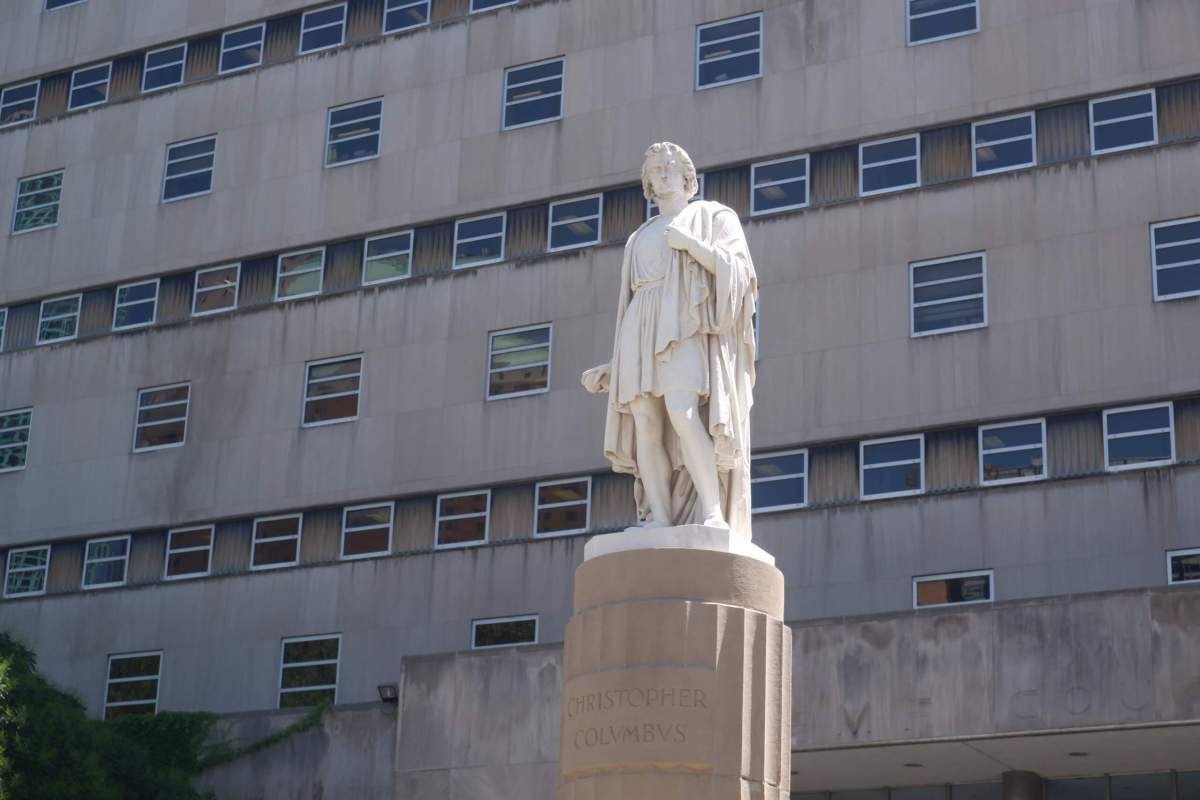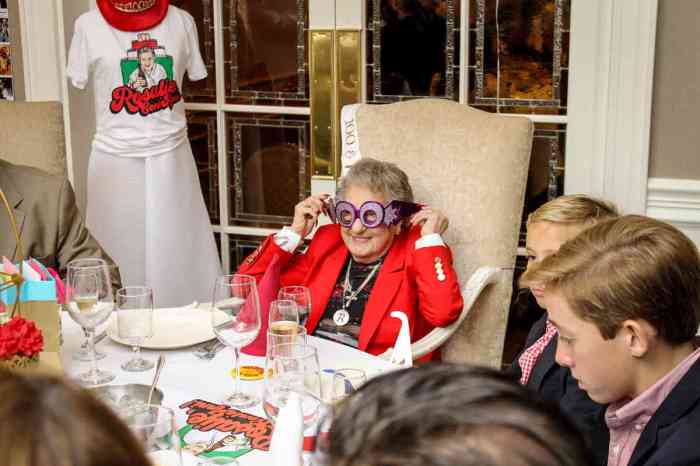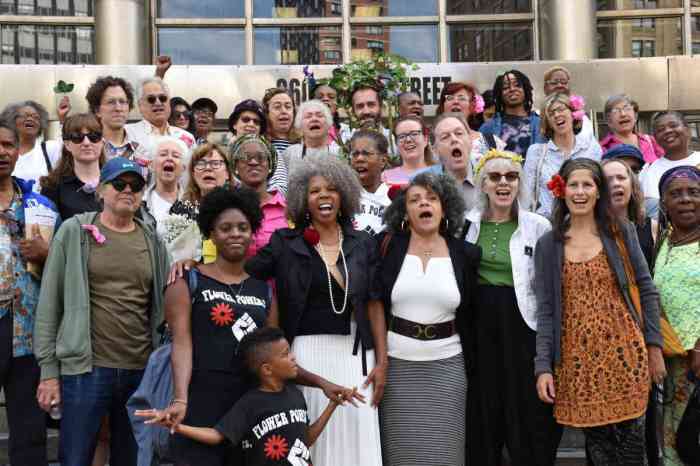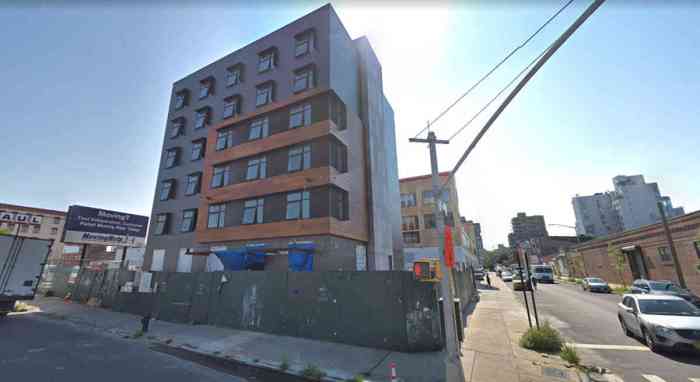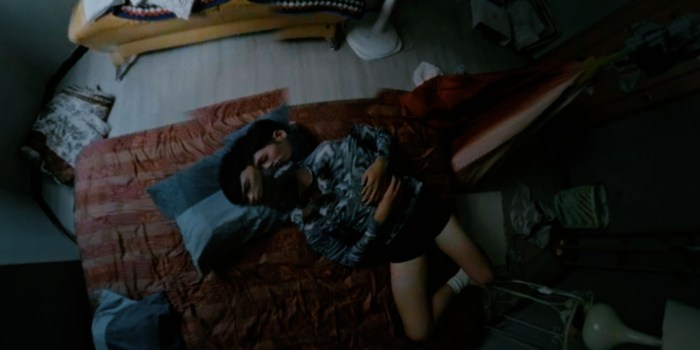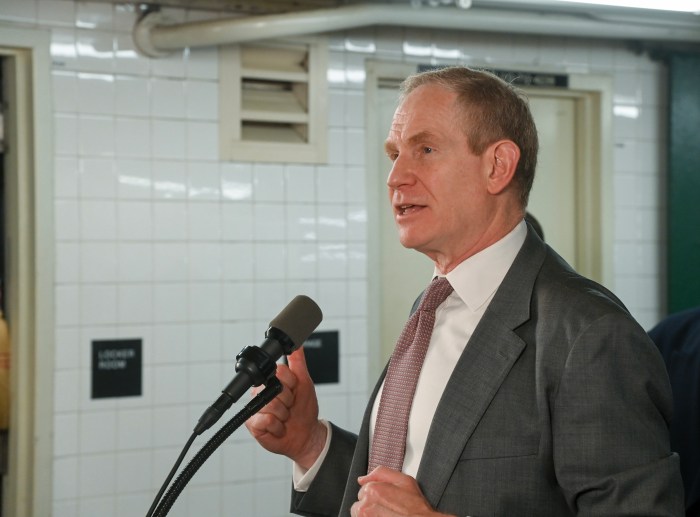An anonymous online group has launched a small petition to remove the statue of Christopher Columbus from outside the State Supreme Court Building in Downtown Brooklyn, and to rename the adjacent Columbus Park.
The petition, which was started on June 10 by a group that calls itself simply “The People,” demands that the city turn to Native American communities for choosing the new name of the park and the statue’s replacement, lamenting the 15th-century explorer for his “ruthless conquest and settler colonialism.”
“We demand that the name of Columbus Park be changed! We demand that the statue of Columbus be removed! We demand that you consult Native communities in renaming the park,” the initiative reads.
The petition has also sparked an educational talk at the statue called “Oh No Columbus,” set for Friday night at 8:30 pm, according to a Greenpoint organizer of the event, who asked not to be named for fear of backlash.
The activist said that she hadn’t heard about the Kings County statue honoring Columbus until one of her friends told her about it, and she wanted to organize a discussion exploring Columbus’s history, while drawing attention to the Brooklyn monument.
“We should come out and talk about this thing that nobody knows about here,” the organizer said.
The 7-foot marble statue atop an 11-foot pedestal was sculpted by Emma Stebbins in the 1860s, but lingered in a Central Park maintenance yard until 1934, when officials installed it in Manhattan’s Chinatown, according to the Parks Department’s website. In 1971, following the renaming of the southern part of Cadman Plaza in honor of Columbus, the administration of Mayor John Lindsay installed the statue at its current location with support from the Italian Historical Society of America.
The Italian-American group’s executive director argued that Columbus was a pioneer and that removing the statue was an “attack” on history.
“At a time when even the shape of this planet was unknown, Christopher Columbus was a man with a vision and extraordinary navigation skills,” said John LaCorte in a statement. “To look at the accomplishment through a historical and moral perspective that has evolved over 600 years is an attack on an understanding of history and the evolution of human consciousness.”
The president of the Bath Beach-based Federation of Italian American Organizations of Brooklyn said that, while he supported the need for recognizing other groups’s history, it should not come at the expense of Columbus.
“The statues, parks and streets dedicated to Columbus represent the important achievements and contributions of Italian Americans today to our American society,” said Jack Spatola in a statement. “We join in to support the many other groups seeking due recognition, but do not understand or support why that endeavor should diminish the achievements of the Italian American community.”
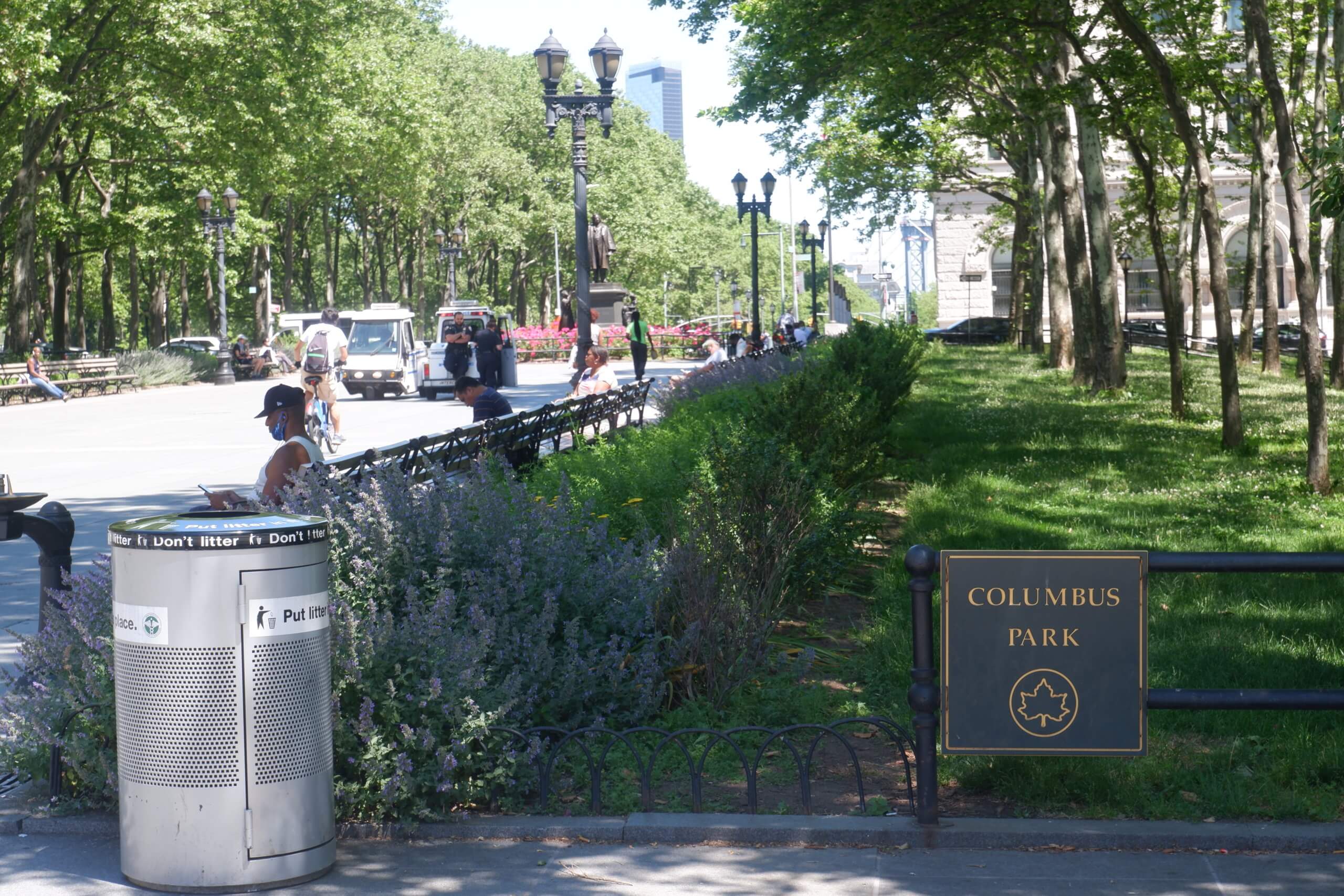
Last October, a vandal spray-painted the letters “FC” at the base of the pedestal on the federal holiday dedicated to Columbus — which has been recently renamed “Indigenous People’s Day” in some parts of the country to appease critics who denounced the explorer for his enslavement of the natives he encountered during his travels.
The recent move to take the monument down, which has so far collected more than 150 signatures of support, comes amid similar demands to remove and rename the more prominent Columbus statue atop Columbus Circle in Manhattan — for which another petition has already collected some 5,000 signatures.
The initiatives have gained momentum as nationwide protests continue to decry police brutality toward black Americans in the wake of the killing of 46-year-old George Floyd by a former Minneapolis police officer.
Some activists have now called for the removal of controversial historical monuments — particularly generals of the Confederacy and other colonial figures.
Brooklyn congressional members Max Rose and Yvette Clarke recently called on the US Army to rebrand two streets named after Confederate generals within the Fort Hamilton military base on June 11, saying military property should not be named after those who “sought to tear it apart to uphold white supremacy.”
Some protesters outside the Five Boroughs have taken matters into their own hands, including separate groups of demonstrators who beheaded statues of Columbus in Boston and New Jersey earlier this week.
This is not the first time Columbus statues in New York City have faced scrutiny.
Mayor Bill de Blasio in 2017 launched a commission to review “symbols of hate” across the city — including statues of Columbus — following the deadly white supremacist “Unite the Right” rally in Charlottesville, Virginia.
The city ultimately decided to keep the statues, amid fierce defenses from Italian Americans, including Gov. Andrew Cuomo, but officials said they would place new historical markers explaining the history of the explorer and the monument itself.
At his daily press briefing on Friday, de Blasio — who a day before was quick to support Rose and Clarke’s calls to change the Confederate general names on the Fort Hamilton streets outside of his jurisdiction at a federal level — declined to take a new position on the statues and stuck by the 2017 review.
“The commission did really careful, extensive work, really good, devoted people who care about understanding all of history and they care about social justice and came up with a vision for how to address this,” de Blasio said. “We should, I think, just stick to what was achieved by that commission.”
Governor Cuomo weighed in at his June 11 press conference, saying that while he understood criticisms of Columbus’s acts, the statue represents the contributions of Italian-Americans to New York.
“I understand the feelings about Christopher Columbus and some of his acts, which nobody would support,” Cuomo said on June 11. “But the statue has come to represent and signify appreciation for the Italian-American contribution to New York, so for that reason, I support it.”
At the Downtown plaza Friday morning, Brooklynites expressed mixed feelings about the statue, with one Bedford-Stuyvesant resident saying that the Columbus statue belonged in a museum and not a civic square.
“Put it in a place where they can go see it, like in a museum,” said Anthony Baker.
Another woman sitting on the benches adjacent to the statue said that the city should keep it up as a way for people to remember history.
“If you need to get your voice heard or make changes, that’s fine, but destroying things, it doesn’t solve the problems,” said Andria B. “It’s a part of history and that’s how we move forward as a nation, going back and learning from those things so it doesn’t happen again or people can make changes towards it.”
One Brooklyn Heights local echoed the findings of de Blasio’s 2017 review, arguing that the statue should stay but with a clear disclaimer about Columbus’s contentious history.
“I think rather than taking them all down, what they could do possibly is maybe put a plaque there to give historical perspective of what really happened,” said Sandy Raderman. “It’s almost like putting it in a museum but it’s on the outside.”
Update (Saturday, June 13, 5:45 pm): This article has been updated to include comment from John LaCorte of the Italian Historical Society of America.


